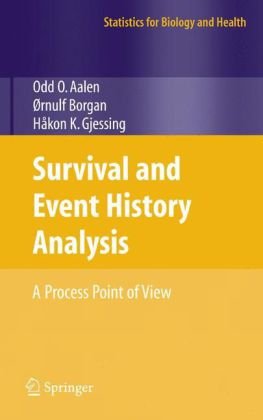

Most ebook files are in PDF format, so you can easily read them using various software such as Foxit Reader or directly on the Google Chrome browser.
Some ebook files are released by publishers in other formats such as .awz, .mobi, .epub, .fb2, etc. You may need to install specific software to read these formats on mobile/PC, such as Calibre.
Please read the tutorial at this link: https://ebookbell.com/faq
We offer FREE conversion to the popular formats you request; however, this may take some time. Therefore, right after payment, please email us, and we will try to provide the service as quickly as possible.
For some exceptional file formats or broken links (if any), please refrain from opening any disputes. Instead, email us first, and we will try to assist within a maximum of 6 hours.
EbookBell Team

5.0
68 reviewsTime-to-event data are ubiquitous in fields such as medicine, biology, demography, sociology, economics and reliability theory. Recently, a need to analyze more complex event histories has emerged. Examples are individuals that move among several states, frailty that makes some units fail before others, internal time-dependent covariates, and the estimation of causal effects from observational data.
The aim of this book is to bridge the gap between standard textbook models and a range of models where the dynamic structure of the data manifests itself fully. The common denominator of such models is stochastic processes. The authors show how counting processes, martingales, and stochastic integrals fit very nicely with censored data. Beginning with standard analyses such as Kaplan-Meier plots and Cox regression, the presentation progresses to the additive hazard model and recurrent event data. Stochastic processes are also used as natural models for individual frailty; they allow sensible interpretations of a number of surprising artifacts seen in population data.
The stochastic process framework is naturally connected to causality. The authors show how dynamic path analyses can incorporate many modern causality ideas in a framework that takes the time aspect seriously.
To make the material accessible to the reader, a large number of practical examples, mainly from medicine, are developed in detail. Stochastic processes are introduced in an intuitive and non-technical manner. The book is aimed at investigators who use event history methods and want a better understanding of the statistical concepts. It is suitable as a textbook for graduate courses in statistics and biostatistics.
Odd O. Aalen is professor of medical statistics at the University of Oslo, Norway. His Ph.D. from the University of California, Berkeley in 1975 introduced counting processes and martingales in event history analysis. He has also contributed to numerous other areas of event history analysis, such as additive hazards regression, frailty, and causality through dynamic modeling.
Ørnulf Borgan is professor of statistics at the University of Oslo, Norway. Since his Ph.D. in 1984 he has contributed extensively to event history analysis. He is co-author of the monograph Statistical Models Based on Counting Processes, and is editor of Scandinavian Journal of Statistics.
Håkon K. Gjessing is professor of medical statistics at the Norwegian Institute of Public Health and the University of Bergen, Norway. Since his Ph.D. in probability in 1995, he has worked on a broad range of theoretical and applied problems in biostatistics.